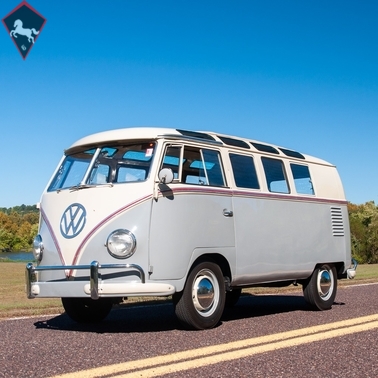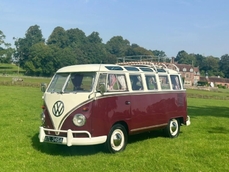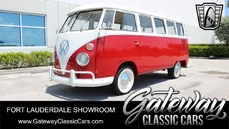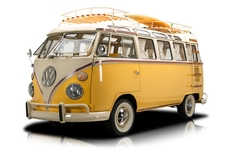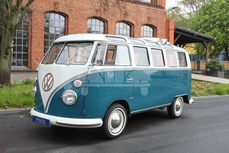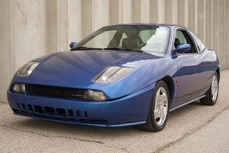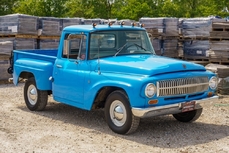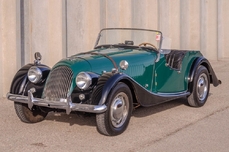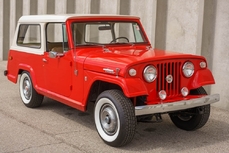Volkswagen Typ 2 Split Screen 1.2L flat four-cylinder 1959
General description :
1959 Volkswagen Bus 19-Window
This bus underwent a complete restoration with new and original VW materials and has been customized into a 19-window Splittie variant
Original 1.2L flat, air-cooled four-cylinder engine
Four-speed manual transmission
White Lotus and Light Gray exterior with original gray and tan upholstery inside
Hella headlights and VDO gauges
Original sunroof bus
Original banana-model arrows
Own this Vehicle from $869 per month-call 636-600-4600
Early first-generation VW Type 1 Transporters, better known here as the VW Bus, are becoming rarer as time goes on. This handsome example underwent a complete restoration with new and original Volkswagen materials was customized into a 19-window Split-Window or Splittie variant.
Finished in a White Lotus over Light Gray, the exterior is in overall great condition. Both sections of the split windshield are finished in chrome and flip-out for extra ventilation. The bodywork is straight and includes the van’s original sunroof and original banana-model arrows. The engine bay is exceptionally tidy, the bumperettes with overriders look fantastic.
This Splittie rolls on Goodyear tires, size 6.40-15 at all four corners. Each tire surrounds factory full moon wheel covers with gray beauty rings. The tires and wheels are in very good order.
In the back is the original German 1.2L flat, air-cooled four-cylinder engine buttoned to a four-speed manual transmission.
Inside, the original gray and tan upholstery makes this a true time capsule vehicle. The seats have been wrapped in clear plastic to preserve the original patina. On the floor are black mats that are in decent order. A two-spoke steering wheel faces the driver. The dashboard, with its VDO gauges is in satisfactory shape while the inner door liners exhibit the same patina as the seats.
The first generation of the Volkswagen Type 2 with the split windshield, informally called the Microbus, Splitscreen, or Splittie among modern fans, was produced from March 8,1950 through the end of the 1967 model year. Like the Beetle, the first Transporters used the 1100 Volkswagen motor, a 1.1L air-cooled flat-four-cylinder ‘boxer’ engine mounted in the rear. This was upgraded to the 1.2L in 1953.
Competition to this VW Bus included Chevrolet’s Greenbrier (Corvan) (1961), and G-10 Sportvan (1965), Dodge’s A100 (1964) Ford’s Econoline (1961) and GMC’s Handi-Bus (1965).
Classic VW fans or fans of vans in general, this Splittie is not something you should pass by without stopping by MotoeXotica Classic Cars and examining up close.
VIN: 11316
This car is currently located at our facility in St. Louis, Missouri. Current mileage on the odometer shows 98,855 miles. It is sold as is, where is, on a clean and clear, mileage exempt title. GET OUT AND DRIVE!!!
CLICK HERE TO VIEW OUR YOUTUBE VIDEO!!!
Copy & Paste the Link Below to View Our YouTube Video:
https://youtu.be/kroL8t_rty0
https://www.motoexotica.com/inventory/listing/1959-volkswagen-bus-19-window/
1959 Volkswagen Typ 2 Split Screen 1.2L flat four-cylinder is listed sold on ClassicDigest in Fenton (St. Louis) by for $57500.
Car Facts
Car type : Car Make : Volkswagen Model : Typ 2 Split Screen Model Version : 1.2L flat four-cylinder Engine size : 1.2 Model Year : 1959 Sub type : Van Location : Fenton (St. Louis)
Sold
Seller Information
Sold
People who viewed this Volkswagen Typ 2 Split Screen also viewed similar Volkswagen listed at ClassicDigest
Other cars listed for sale by this dealer
About Volkswagen
The Volkswagen story is indeed an intriguing tale of innovation, resilience, and post-war revival, marked by various models that have become iconic in automotive history.The People's Car (Volkswagen): Initially envisioned by Adolf Hitler in the 1930s as a "people's car" or "Volkswagen" in German, the idea was to create an affordable and practical vehicle for the German people. This concept led to the development of the Volkswagen Beetle (or the Type 1), designed by Ferdinand Porsche.
Post-War Challenges: After World War II, Volkswagen faced significant challenges. The factory was heavily damaged, and the brand's association with the Nazi regime led to a lack of interest in the car in some regions.
British Intervention - The British Army & Ivan Hirst: The British Army took control of the factory in the immediate post-war period. Major Ivan Hirst, a British Army officer, played a crucial role in reviving Volkswagen. He recognized the potential of the Beetle and advocated for its production, convincing the British military to order several thousand cars. This decision helped jumpstart the brand's revival.
Export Success and the Beetle's Global Appeal: The Beetle gained popularity not only in Germany but also globally, becoming an icon of affordable motoring. Its simple, reliable design and unique appearance made it a favorite among consumers worldwide.
Model Evolution: Over the years, Volkswagen introduced various models alongside the Beetle, each contributing to the brand's growth:
Type 2 (VW Bus or Transporter): Introduced in the 1950s, it became an iconic symbol of the hippie movement in the 1960s, loved for its spaciousness and versatility.
Golf (Rabbit in the U.S.): Launched in the mid-1970s, the Golf (or Rabbit in the U.S.) marked a shift towards front-wheel-drive, modern design, and hatchback practicality, becoming a cornerstone of the brand's success.
Passat, Jetta, and Other Models: Volkswagen expanded its lineup with models like the Passat and Jetta, catering to different market segments.
Challenges and Innovations: Despite success, Volkswagen faced challenges, including quality issues in the 1970s. However, the brand continued to innovate and develop new models and technologies.
Rise of the GTI and Global Expansion: The 1980s saw the rise of the iconic Golf GTI, a high-performance version that sparked the hot hatch trend. Volkswagen also expanded its global presence during this period.
The British intervention in reviving Volkswagen after World War II played a pivotal role in the brand's resurgence. While there might have been some tensions or competition among automotive companies in the 1950s and 1960s due to Volkswagen's post-war success, the brand's ability to produce innovative and popular models solidified its place in automotive history.
